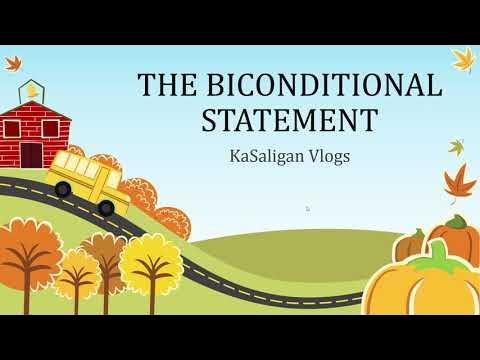Curso completo de Raciocínio Lógico para Concursos Públicos 2019 - Aula 05
Summary
TLDRIn this engaging video, the speaker tackles the topic of truth and lies, specifically through a logic puzzle involving four suspects: Abel, Denis, Osvaldo, and Gleison. By analyzing their statements and using deductive reasoning, the speaker identifies the guilty party while showcasing different methods to solve the problem. Additionally, another example is provided, involving Marcos and Newton, to illustrate the logic of truth and falsehood based on the color of the tokens they carry. The video aims to teach viewers how to solve similar puzzles efficiently and accurately.
Takeaways
- 🔍 The speaker emphasizes the importance of solving logic puzzles involving truths and lies.
- 🧩 The example puzzle involves four suspects: Osvaldo, Denis, Abel, and Gleison, each making statements about who the culprit is.
- 📜 The key rule is that only one of the four suspects is lying.
- 🕵️♂️ The process involves analyzing each suspect's statement under different hypotheses to determine who is lying.
- ✅ The first hypothesis considers if Osvaldo is the culprit, checking each statement's truthfulness, and it is rejected.
- 📊 The second hypothesis assumes Abel is the culprit, and after analyzing the statements, it matches the rule that only one suspect lied.
- 🚫 Other hypotheses are also tested but rejected because they result in more than one suspect lying.
- 🔄 The speaker suggests multiple methods to solve such puzzles, including filling a table with possible scenarios and evaluating statements.
- 📝 The second example puzzle involves Marcos and Newton, who either tell the truth or lie based on the color of the cards they carry.
- 🔗 The solution involves checking the consistency of their statements against the possible color combinations of their cards.
Q & A
What is the main topic discussed in the video script?
-The main topic is about solving logic problems involving truth-tellers and liars.
What is the first step the speaker takes in solving the logic problem?
-The first step is to list the hypotheses and the declarations made by each suspect.
How does the speaker determine if a hypothesis is correct or incorrect?
-The speaker evaluates each hypothesis by checking if the declarations match the conditions of truth-telling and lying. If only one suspect lied, the hypothesis is accepted; otherwise, it is rejected.
What conclusion does the speaker reach regarding the suspect 'abel'?
-The speaker concludes that 'abel' is the guilty party since the hypothesis where he is the guilty one matches the condition that only one suspect lied.
What alternative method does the speaker suggest for solving the problem?
-The speaker suggests another method involving filling out a table of hypotheses to analyze the statements more quickly and efficiently.
What are the four possible hypotheses the speaker considers in the second example involving Marcos and Newton?
-The four hypotheses are: both have white stripes, both have black stripes, Marcos has a white stripe and Newton a black stripe, and Marcos has a black stripe and Newton a white stripe.
How does the speaker use the statements made by Marcos and Newton to fill out the table of hypotheses?
-The speaker analyzes the truthfulness of their statements under each hypothesis to determine if the statements are consistent with their assigned stripes.
What final conclusion does the speaker reach in the second example about the stripes Marcos and Newton are carrying?
-The speaker concludes that both Marcos and Newton are carrying white stripes because this hypothesis aligns with the statements made, where one is telling the truth and the other is lying.
Why is it important to know that only one suspect lied in the logic problems discussed?
-Knowing that only one suspect lied is crucial because it serves as the basis for validating or rejecting each hypothesis, ensuring the correct solution is found.
What advice does the speaker give for solving similar logic problems in the future?
-The speaker advises using systematic methods like listing hypotheses and filling tables, as these techniques help solve logic problems more efficiently and accurately.
Outlines

Esta sección está disponible solo para usuarios con suscripción. Por favor, mejora tu plan para acceder a esta parte.
Mejorar ahoraMindmap

Esta sección está disponible solo para usuarios con suscripción. Por favor, mejora tu plan para acceder a esta parte.
Mejorar ahoraKeywords

Esta sección está disponible solo para usuarios con suscripción. Por favor, mejora tu plan para acceder a esta parte.
Mejorar ahoraHighlights

Esta sección está disponible solo para usuarios con suscripción. Por favor, mejora tu plan para acceder a esta parte.
Mejorar ahoraTranscripts

Esta sección está disponible solo para usuarios con suscripción. Por favor, mejora tu plan para acceder a esta parte.
Mejorar ahoraVer Más Videos Relacionados

Propositional Logic Puzzle

CONSTRUCTING A TRUTH TABLE FOR A STATEMENT INVOLVING A CONDITIONAL

Can you open the lock using these clues?

THE BICONDITIONAL STATEMENT (LOGIC- MATHEMATICS IN THE MODERN WORLD)

Discrete Math - 1.1.3 Constructing a Truth Table for Compound Propositions

The Super Mario Effect - Tricking Your Brain into Learning More | Mark Rober | TEDxPenn
5.0 / 5 (0 votes)
